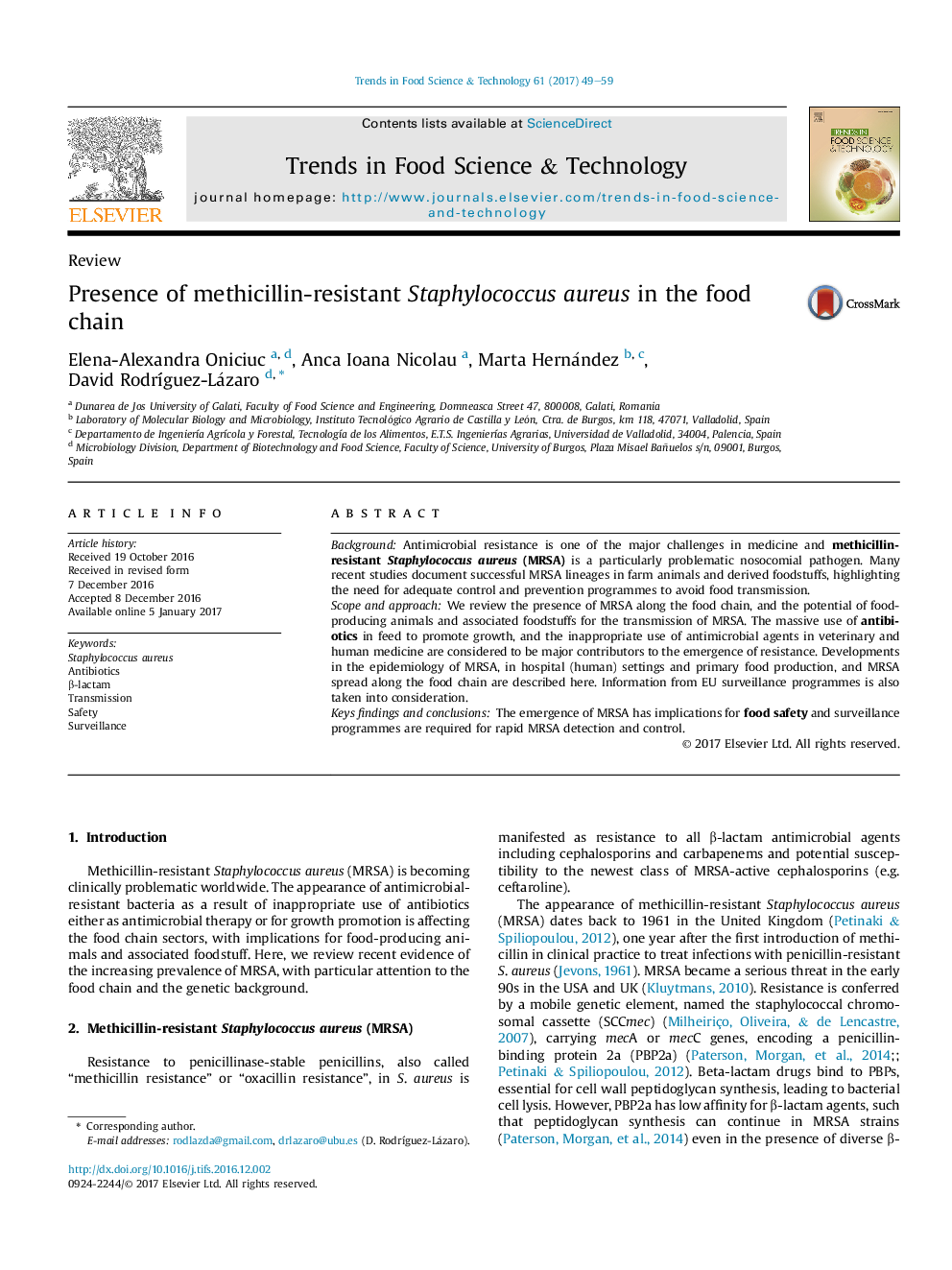| Article ID | Journal | Published Year | Pages | File Type |
|---|---|---|---|---|
| 5523725 | Trends in Food Science & Technology | 2017 | 11 Pages |
â¢MRSA in livestock is a great concern due to its presence in associated foodstuff.â¢Dissemination and foodborne MRSA infections should not be neglected.â¢Control and prevention strategies should be implemented from farm to fork.â¢International regulations in the use of antibiotics in animal production are necessary to reduce the MRSA emergence.
BackgroundAntimicrobial resistance is one of the major challenges in medicine and methicillin-resistant Staphylococcus aureus (MRSA) is a particularly problematic nosocomial pathogen. Many recent studies document successful MRSA lineages in farm animals and derived foodstuffs, highlighting the need for adequate control and prevention programmes to avoid food transmission.Scope and approachWe review the presence of MRSA along the food chain, and the potential of food-producing animals and associated foodstuffs for the transmission of MRSA. The massive use of antibiotics in feed to promote growth, and the inappropriate use of antimicrobial agents in veterinary and human medicine are considered to be major contributors to the emergence of resistance. Developments in the epidemiology of MRSA, in hospital (human) settings and primary food production, and MRSA spread along the food chain are described here. Information from EU surveillance programmes is also taken into consideration.Keys findings and conclusionsThe emergence of MRSA has implications for food safety and surveillance programmes are required for rapid MRSA detection and control.
